 W
WAriarathes VI Epiphanes Philopator, was the Ariarathid king of Cappadocia from 130 BC to 116 BC. He was the youngest son of Ariarathes V of Cappadocia and Nysa of Cappadocia.
 W
WAriarathes IX Eusebes Philopator, was made king of Cappadocia by his father King Mithridates VI of Pontus after the assassination of Ariarathes VII of Cappadocia. Since he was only eight years old, he was put under the regency of the Cappadocian Gordius. Early in his reign, he was overthrown by a rebellion by the Cappadocian nobility, who replaced him with Ariarathes VIII of Cappadocia, whom Mithridates promptly expelled, restoring Ariarathes IX. In 95 BC the Roman Senate ordered his deposition, and, after a short period of direct Pontic rule, a brief restoration of Ariarathes VIII and an attempt of creation of a republic, put in his place a man chosen by the Cappadocians, who rejected the idea of a republic: Ariobarzanes I Philoromaios. He was later expelled by Mithridates's ally Tigranes the Great, bringing another brief restoration of Ariarathes IX, who was deposed once again by the Romans in 89 BC. Two years later, in 87 BC, Ariarathes IX died fighting for his father in Thessaly.
 W
WArsaces II, was the Arsacid king of Parthia from 217 BC to 191 BC.
 W
WArtabanus I, incorrectly known in older scholarship as Artabanus II, was king of the Parthian Empire, ruling briefly from c. 127 to 124/3 BC. His short reign ended abruptly when he died during a battle against the Yuezhi in the east. He was succeeded by his son Mithridates II.
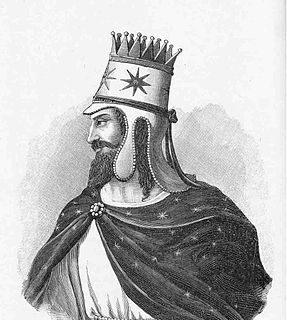 W
WArtaxias I was the founder of the Artaxiad dynasty of Armenia, ruling from 189 BC to 160 BC. He was succeeded by his son Artavasdes I.
 W
WBaydad, was a dynast (frataraka) of Persis from 164 to 146 BC.
 W
WDarayan I was the first king of Persis, most likely invested with kingship of the region by his overlord, the Parthian monarch Phraates II sometime after 132 BC.
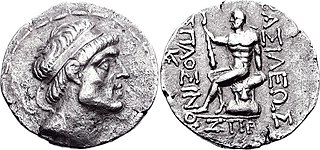 W
WHyspaosines was an Iranian prince, and the founder of Characene, a kingdom situated in southern Mesopotamia. He was originally a Seleucid satrap installed by king Antiochus IV Epiphanes, but declared independence in 141 BC after collapse of Seleucid authority in Iran and Babylonia to the Parthians. Hyspaosines briefly occupied the Parthian city of Babylon in 127 BC, where he is recorded in records as king (šarru). In 124 BC, however, he was forced to acknowledge Parthian suzerainty. He died in the same year, and was succeeded by his juvenile son Apodakos.
 W
WMithridates I, also known as Mithridates I the Great, was king of the Parthian Empire from 171 BC to 132 BC. During his reign, Parthia was transformed from a small kingdom into a major political power in the Ancient East as a result of his conquests. He first conquered Aria, Margiana and western Bactria from the Greco-Bactrians sometime in 163–155 BC, and then waged war with the Seleucid Empire, conquering Media and Atropatene in 148/7 BC. In 141 BC, he conquered Babylonia and held an official investiture ceremony in Seleucia. The kingdoms of Elymais and Characene shortly afterwards became Parthian vassals. In c. 140 BC, while Mithridates was fighting the nomadic Saka in the east, the Seleucid king Demetrius II Nicator attempted to regain the lost territories; initially successful, he was defeated and captured in 138 BC, and shortly afterwards sent to one of Mithridates I's palaces in Hyrcania. Mithridates I then punished Elymais for aiding Demetrius, and made Persis a Parthian vassal.
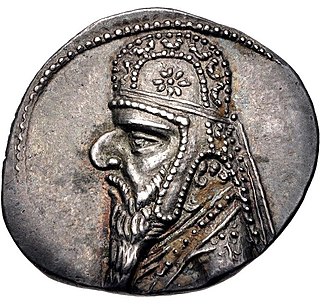 W
WMithridates II was king of the Parthian Empire from 124 to 91 BC. Considered one of the greatest of his dynasty to ever rule, he was known as Mithridates the Great in antiquity.
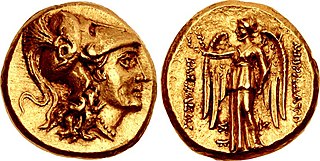 W
WMithridates III was the fourth King of Pontus, son of Mithridates II of Pontus and Laodice. Mithridates had two sisters: Laodice III, the first wife of the Seleucid King Antiochus III the Great, and Laodice of Pontus. He may have ruled in an uncertain period between 220 BC and 183 BC. Nothing is known of him since the years just cited, because the kingdom of Pontus disappears from history. His same existence is contested by certain historians, even if it is necessary to account for Appian's indication of Mithridates VI of Pontus as the eighth king of the dynasty and the sixth of the name. Mithridates married an obscure Seleucid princess called Laodice. By this wife, he had three children: Mithridates IV of Pontus, Pharnaces I of Pontus and Laodice.
 W
WMithridates or Mithradates V Euergetes was a Prince and seventh King of the wealthy Kingdom of Pontus.
 W
WMithridates or Mithradates VI Eupator was ruler of the Kingdom of Pontus in northern Anatolia from 120 to 63 BC, and one of the Roman Republic's most formidable and determined opponents. He was an effective, ambitious and ruthless ruler who sought to dominate Asia Minor and the Black Sea region, waging several hard-fought but ultimately unsuccessful wars to break Roman dominion over Asia and the Hellenic world. He has been called the greatest ruler of the Kingdom of Pontus. After his death he became known as Mithridates the Great.
 W
WPriapatius, was the Arsacid king of Parthia from 191 BC to 176 BC. He was the cousin and successor of Arsaces II. Like many Arsacid monarchs, his reign is sparsely known. His coinage indicates that he managed to rid himself of the influence of the Seleucid Empire. He was succeeded by his son Phraates I.
 W
WPharnaces I, fifth king of Pontus, was of Persian and Greek ancestry. He was the son of King Mithridates III of Pontus and his wife Laodice, whom he succeeded on the throne. Pharnaces had two siblings: a brother called Mithridates IV of Pontus and a sister called Laodice who both succeeded Pharnaces. He was born and raised in the Kingdom of Pontus.
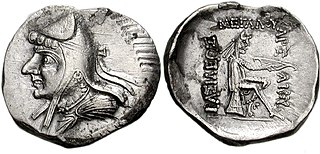 W
WPhraates I was ruler of the Parthian Empire from c. 176–171 BC. He subdued the Amardians, mountaineers occupying the eastern portion of the Elburz range, south of the Caspian Sea. He died relatively young, and appointed as his successor not one of his sons, but his brother Mithridates I. He was the son and successor of Priapatius on the throne.
 W
WPhraates II was king of the Parthian Empire from 132 BC to 127 BC. He was the son and successor of Mithridates I.
 W
WRhodogune was a Queen of the Seleucid Empire by marriage to Demetrius II Nicator. She was the daughter of the Parthian king Mithridates I, and sister of Phraates II.
 W
WSkilurus, or Scylurus, was the best-known king of Scythia in the 2nd century BC. He was the son of a king and the father of a king, but the relation of his dynasty to the previous one is disputed. His realm included the lower reaches of the Borysthenes and Hypanis, as well as the northern part of Crimea, where his capital, Scythian Neapolis, was situated.
 W
WWadfradad II was a dynast (frataraka) of Persis in the late 2nd-century BC, ruling sometime after 138 BC. He was appointed as frataraka by the Parthian king Mithridates I, who granted him more autonomy, most likely in an effort to maintain healthy relations with Persis as the Parthian Empire was under constant conflict with the Saka, Seleucids, and Characene. The coinage of Wadfradad I shows influence from the coins minted under Mithridates I. Wadfradad I was succeeded by Darayan I, the first of the Kings of Persis.
 W
WWahbarz, known in Greek sources as Oborzos, was a dynast (frataraka) of Persis in the 1st half of 2nd century BC, ruling from possibly c. 205 to 164 BC. His reign was marked by his efforts to establish Persis as a kingdom independent from Seleucid authority. He was able to reign independently for three decades, and even expanded to the west, seizing the Seleucid province of Characene. In 164 BC, the Seleucids repelled Wahbarz's forces from Characene, forcing him to re-submit as a Seleucid vassal. He was succeeded by Baydad.